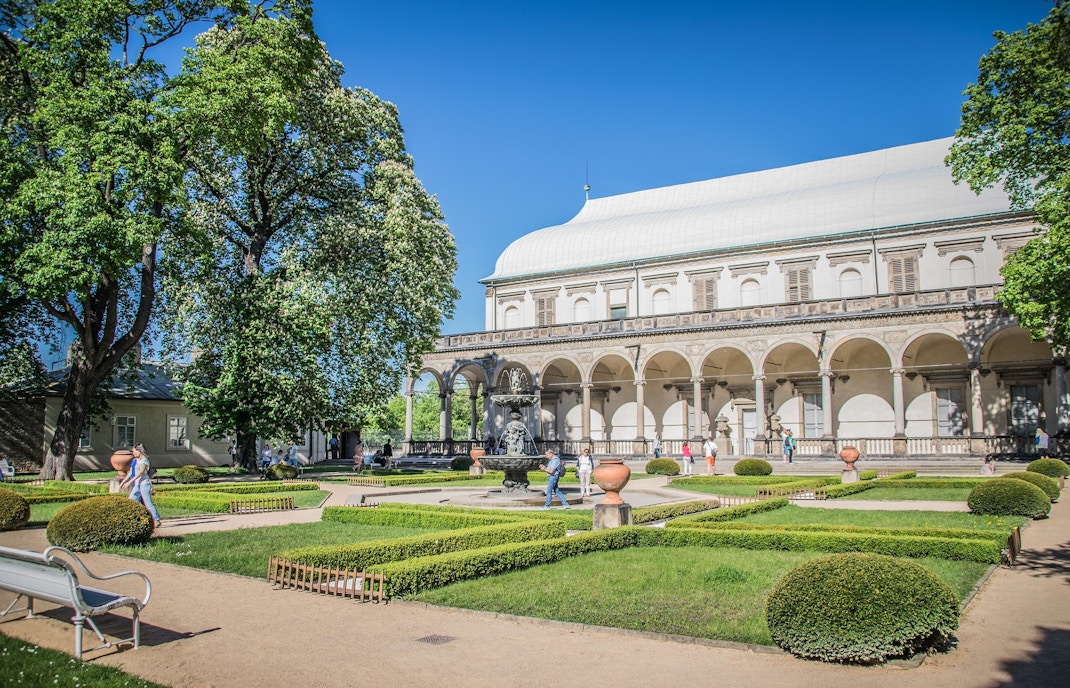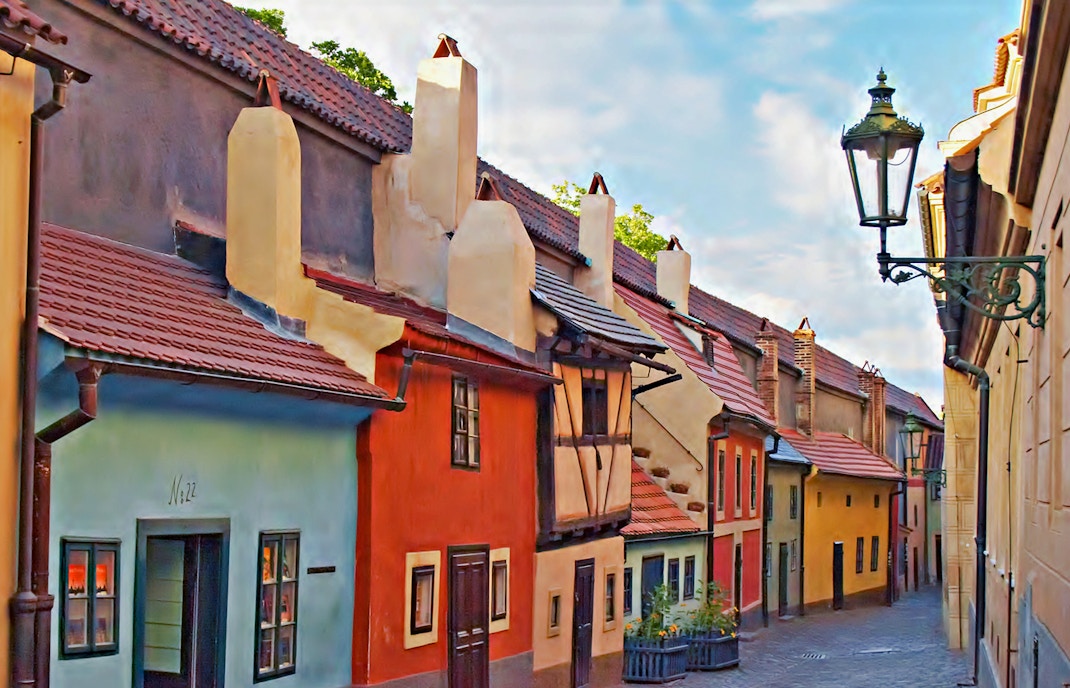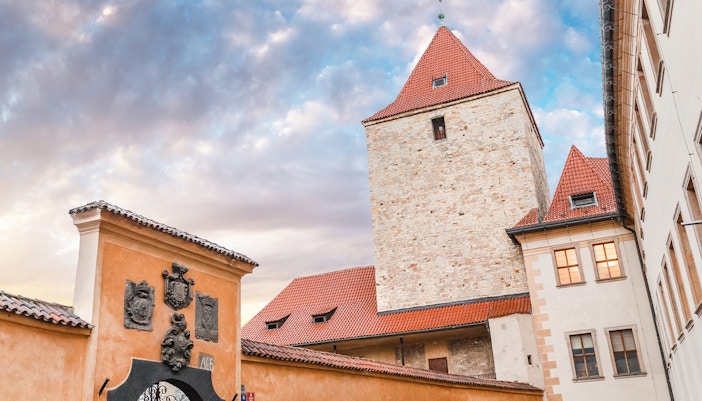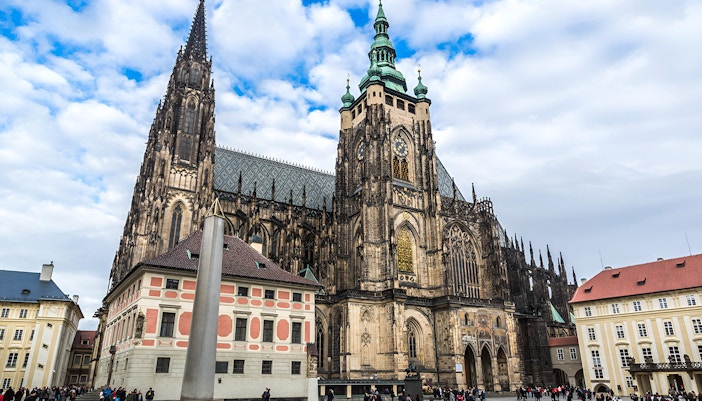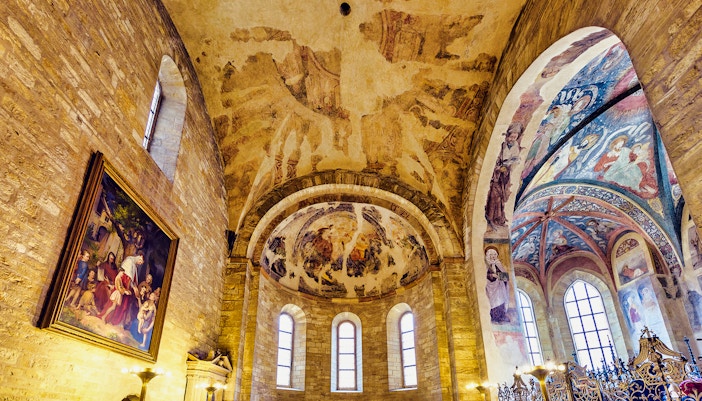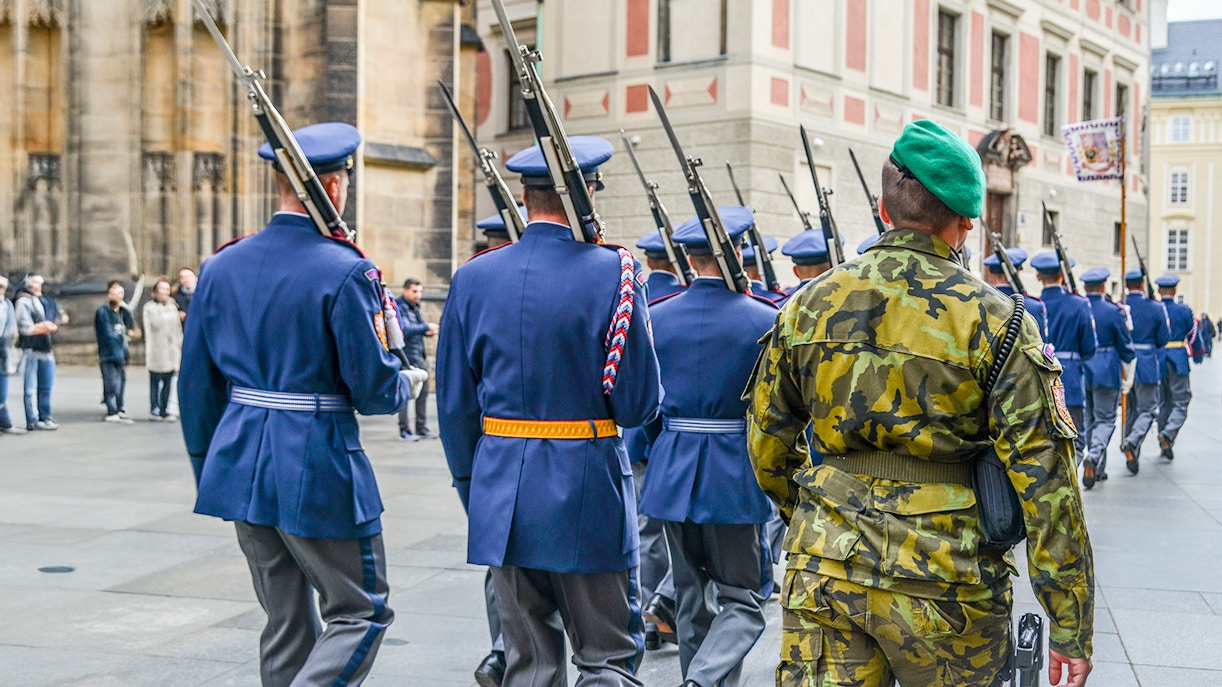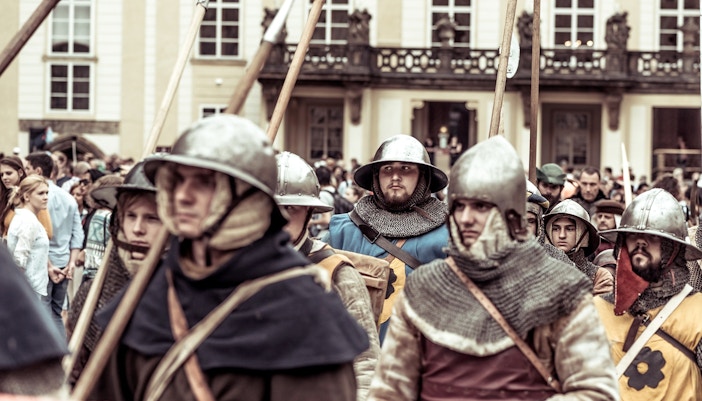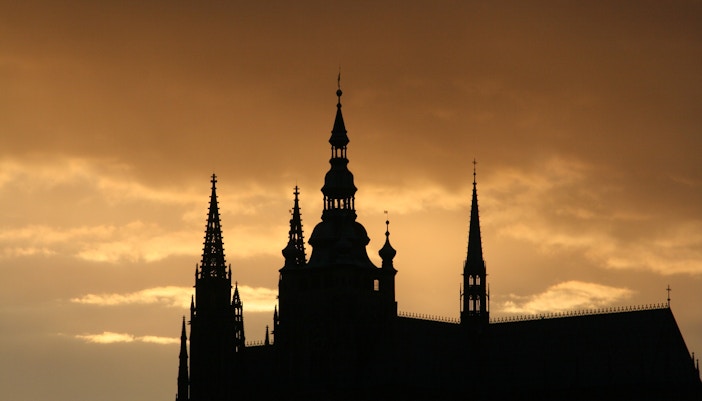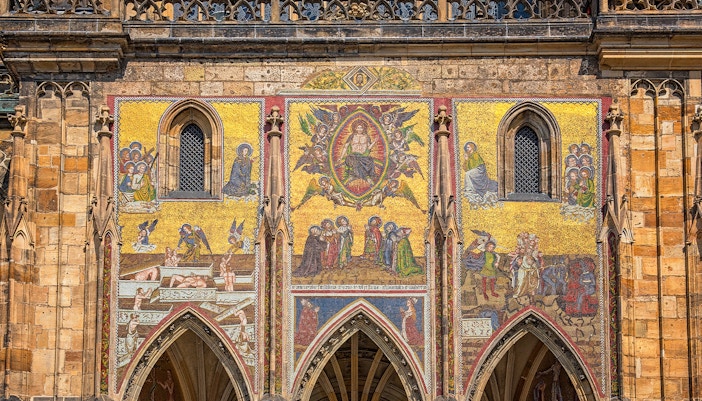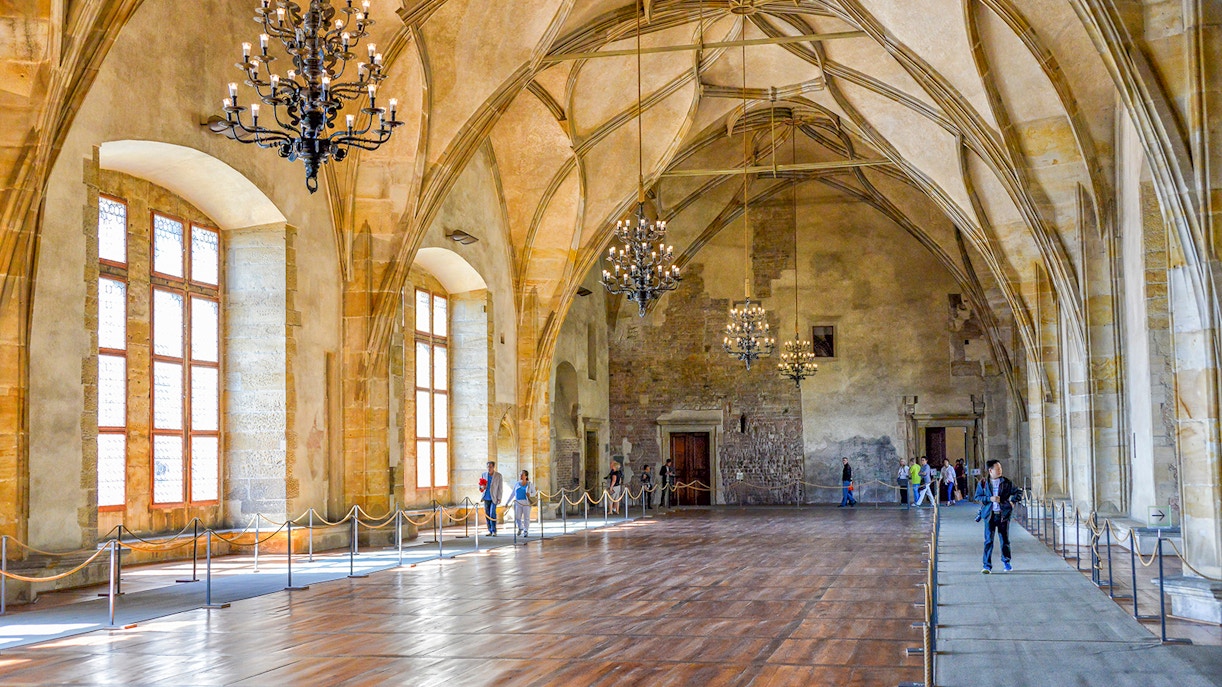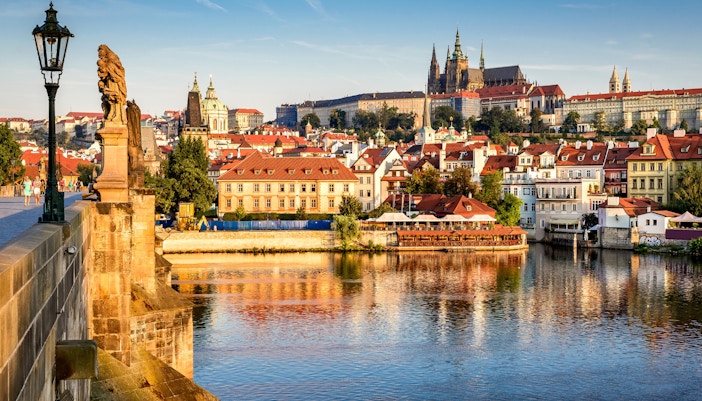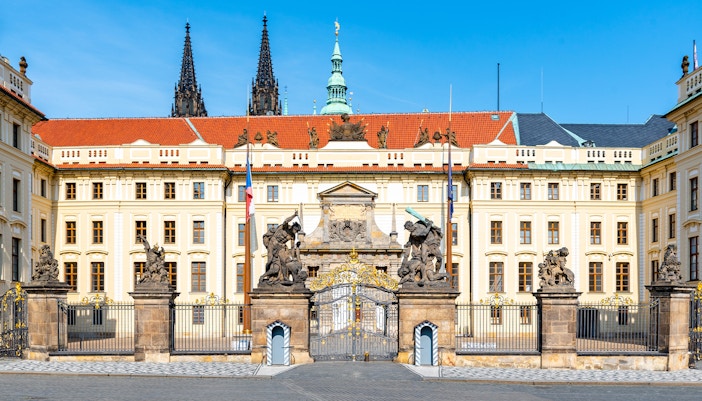The Basilica of St. George and St. Vitus Cathedral are the two most prominent churches of Prague Castle. The former is one of the oldest churches in the Czech Republic and boasts a Romanesque architecture style with baroque elements, while the St. Vitus Cathedral is a magnificent Gothic masterpiece. Its architectural grandeur is of great pride to the country. All Saints Church and Holy Cross Chapel are other churches in the complex that are not as grand but are plenty charming.
Prague Castle Complex Buildings & Highlights
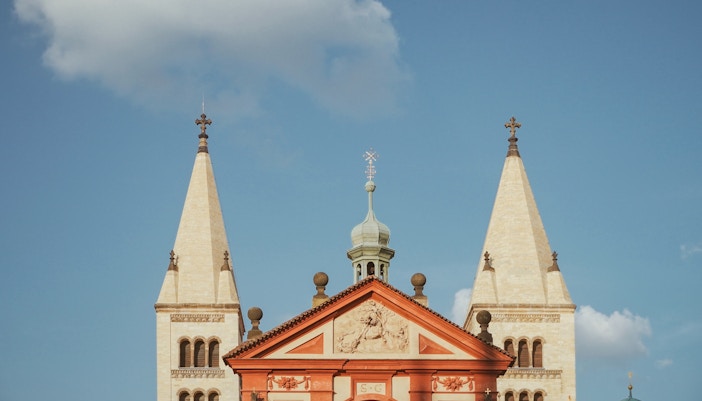
Prague Castle churches
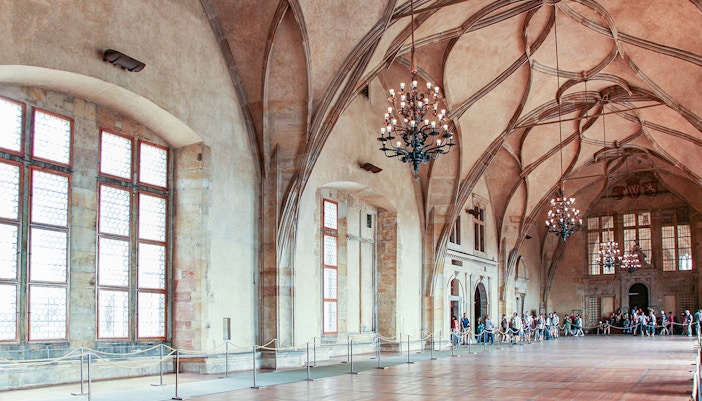
Prague Castle halls
The Spanish and Vladislav Halls are the most notable among the 5 halls at Prague Castle. The Spanish Hall is a beautiful stateroom embellished with stucco decorations and Baroque ornamentation. It was built in the 17th century for Emperor Rudolph II and held important sculptures. Today, the hall is a place of many gala dinners and important political events. Similarly, Vladislav Hall is reserved for large public events like coronations and banquets since it boasts the most floor space of all.
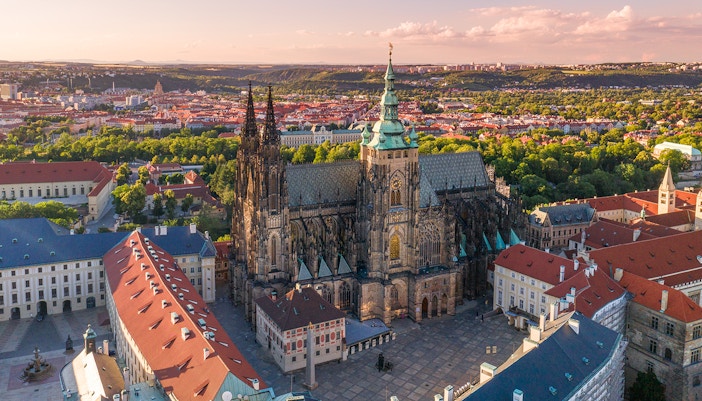
Prague Castle palaces
The **Old Royal Palace **is one of the most popular palaces of Prague Castle. It was built in Romanesque stonework in the 12th century and showcases late Gothic architectural features. The most important representative hall, the Vladislav Hall, is part of this palace. It was also the place where kings and queens used to reside. Nearby, in the Royal Garden, is Queen Anna’s Summer Palace, also called Summer Palace or Belvedere, which is built in the Renaissance architectural style and is a must-see spot.
